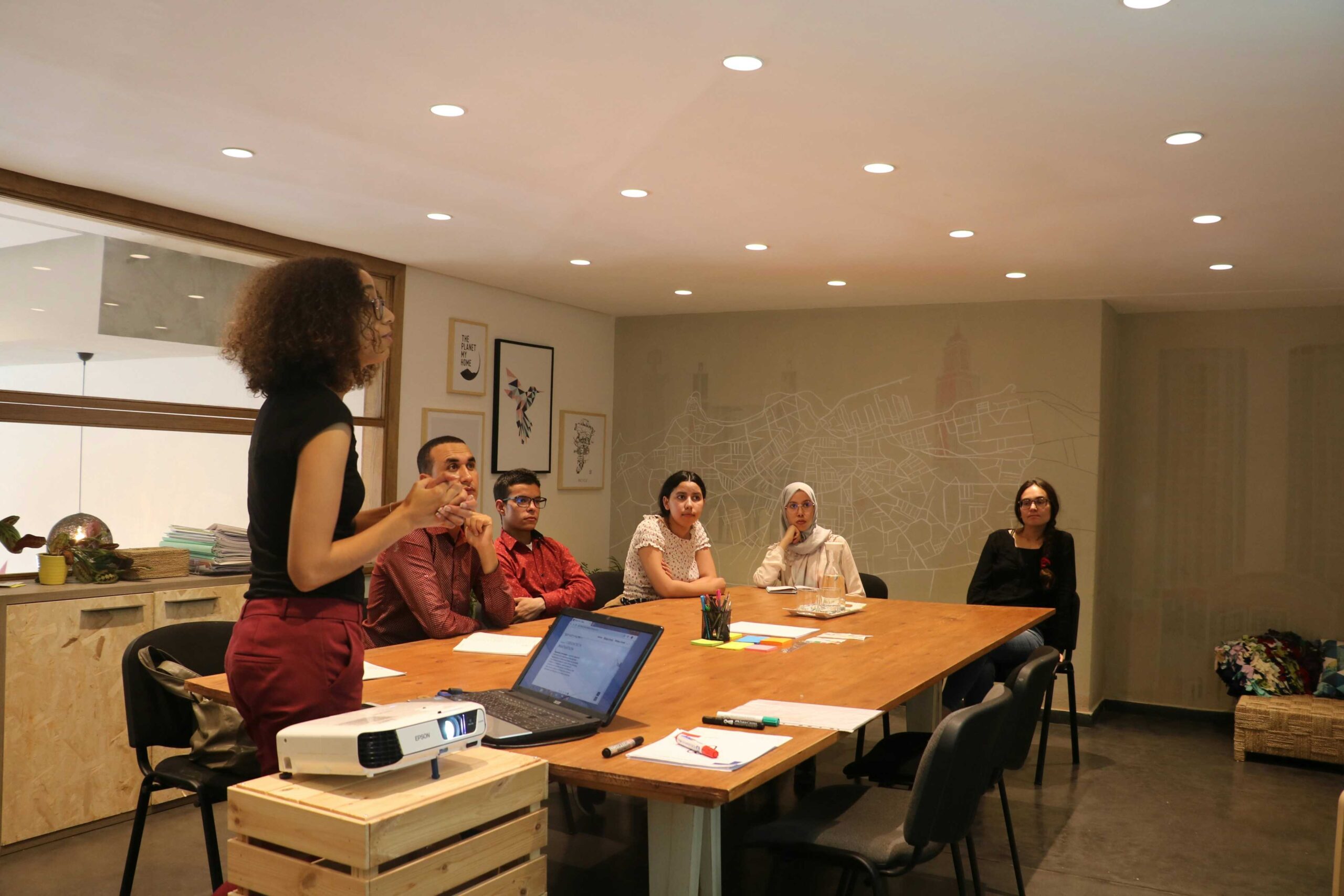Is your leadership style secretly holding back your team meetings? After 14 years of helping business owners build high-performing teams, I’ve noticed a pattern: The very meeting structure that made sense when you started might be preventing your team from thriving now.
Let’s explore why most team meetings drain energy instead of creating momentum, and more importantly, how to transform them with just three strategic questions.
The Mini-Me Meeting Trap
As a business owner, your drive and hands-on approach have been crucial to your success. However, expecting your team meetings to function with you as the central driver often leads to frustration and disappointment.
Here’s why: Most meetings accidentally create dependency on the leader. You find yourself:
- Being the cheerleader bringing all the energy
- Preparing extensively while team members show up unprepared
- Watching team members passively attend rather than actively participate
- Noticing meetings dissolve into one-way status updates rather than collaborative problem-solving
The irony? Many business owners are tempted to cancel these draining meetings, which only compounds the problem. Without regular check-ins, accountability drops, communication breaks down, and you end up putting out more fires.
The Fundamental Shift: From Informing to Empowering
There’s a crucial difference between two types of team meetings:
Informational meetings centre around you as the leader—asking for updates, providing directions, and solving problems. This is the default for most small business owners.
Empowering meetings centre around the team—their updates, insights, priorities, and solutions.
Let me share a real example from my time working as a director in London. I ran a department with multiple teams, one of which I personally led. We had daily 8 a.m. meetings, but I couldn’t always be there due to my other responsibilities.
My solution? I structured our team meetings to run with or without me. Each team member took turns leading, following a set agenda and asking specific questions. The meeting always kicked off at 8 a.m. regardless of who was present.
This is the first mindset shift: Your team meeting should be the one meeting that is never skipped because when structured correctly, it becomes the engine of your business.
The 3 Questions That Transform Team Meetings
When you shift from telling your team what to do to asking questions that prompt thinking, the entire dynamic changes. Here are the three questions that work across all businesses in all industries:
Question #1: “What’s your biggest win since we last met, and what enabled that success?”
Kicking off with this question creates immediate momentum and positive energy. Instead of diving into problems, you create space to celebrate and reveal what’s working well in the business.
When someone shares what enabled their success, they highlight effective processes that everyone can learn from. There’s also subtle accountability—when people know they’ll be asked to share a win, they come prepared.
Over time, you’ll notice a shift from people reporting to you to sharing more openly with each other, building true collaboration.
Question #2: “What are your priorities for this week?”
This question creates clarity and focus. It forces each team member to be clear about their intentions and publicly state what they’re working on, making them much more likely to follow through.
The public commitment that comes from verbalizing your intention in front of others is powerful. This question also reveals any misalignment in priorities in real time, allowing for immediate course correction.
When your team members determine their own priorities, they embrace true responsibility for their roles. This shifts from being told what to do to declaring what they’re focusing on, building autonomy, ownership, and eventually, initiative.
Question #3: “What support do you need to get that done?”
This final question is far more effective than asking, “How can I help you?” By not defaulting to yourself as the solution provider, you’re asking team members to own their journey to completion.
You’re opening the door for them to get support from you or anyone else on the team. This encourages interdependence rather than dependence on you alone.
Team members will hear if what they’re working on might be an obstacle to someone else achieving their goals—a key to collaboration. This transparency reduces side conversations and fosters greater ownership across the team.
For you as the leader, hearing patterns in the support needed allows you to identify system-wide improvements, helping you work on the business rather than just in it.
Implementing the 3-Question Framework
These three questions aren’t just random prompts—they become the standing format for your recurring team meetings. When your team knows the structure, they’ll come prepared, move through it efficiently, and eventually take turns running it.
The structure creates a natural flow from past (wins) to present (priorities) to future (support needed), driving accountability and results. You can adapt this framework for different meeting types:
- In a daily standup, each person might get 1-2 minutes
- In a weekly meeting, you might allow more time for unpacking wins and discussing priorities
Over time, this structure will reduce the need for you to drive the meeting because everyone knows the format and comes prepared. Eventually, you can miss the meeting entirely, and the team will run everything effectively.
Making the Transition
Here’s how to implement this framework in your business:
- Be transparent – Let your team know you want to try a new structure and explain why
- Be consistent – Commit to following the questions every time, not just when you feel like it
- Be prepared for initial awkwardness – The first time you try this, you might get blank stares or surface-level answers. That’s normal. Be supportive, don’t abandon the process, and give people time to adjust.
You’ll know the shift is happening when:
- Team members start addressing each other rather than answering you directly
- People come prepared with their wins, priorities, and support needs
- The energy in the room changes with everyone participating actively
- Team members offer each other support without prompting
- You find yourself speaking less and listening more
Beyond Better Meetings
This approach does more than improve your meetings—it encourages better thinking among your team. When people reflect on what’s working, clearly state their priorities, and proactively identify what might block progress, they develop their thinking muscle.
Your team becomes more attuned to what’s working, what’s broken, and how to head off obstacles before they become problems. You’re not just running more effective meetings; you’re developing effective thinkers and team members who take ownership of their roles.
As the saying goes, “Culture isn’t a statement; culture is an observation.” By setting up a structure that requires your team to think, you create a culture of thinking over time.
Moving Forward
Are you ready to transform your team meetings? The challenge is to implement these three questions and observe the changes that unfold. Reflect on your current meetings and consider what stops you from making this shift.
Your meetings won’t suddenly become effective on their own—the change needs to be driven by you. If there’s something keeping you stuck from trying something new, that’s what you need to address.
Ready to elevate your leadership approach and create a self-sufficient team? I’m here to help. I work with a select number of private clients and also have a waitlist open for my upcoming Strategic Leadership Circle, designed specifically for small growing businesses who want to work on these challenges in the company of other like-minded leaders.
Start with my Team Performance Audit to identify exactly where the bottlenecks are in your team, uncover your leadership blindspots, and pinpoint areas where you can make quick, impactful improvements. Business owners who’ve completed the audit report gaining clarity in hours that would have taken months of trial and error.
Remember, your team meetings can be transformed from energy-draining obligations into the powerful engine of your business—it just takes asking the right questions.
About Paula

If you're growing a team in-house or online, Paula Maidens can help!


